Mingtang & Tiantang Scenic Area – Ticket, Opening Hours, Location, and Highlights
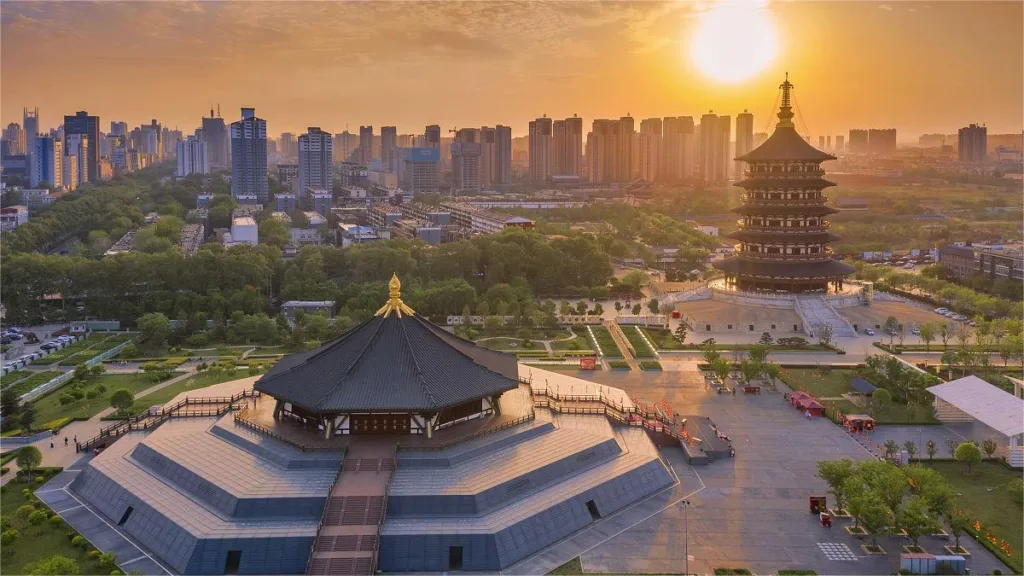

The Mingtang and Tiantang Scenic Area (明堂天堂景区), located at the heart of the Tang Dynasty’s imperial palace complex known as the “Ziwei City (紫薇城),” is a place of historical significance where the Empress Wu Zetian once governed, practiced Buddhism, and lived her life. Now situated within the Sui and Tang Dynasties Luoyang City National Heritage Park, it has become an essential destination for tourists exploring Luoyang. This scenic area primarily comprises two architectural marvels: the Mingtang and the Tiantang.
The Mingtang served as the main hall of the Ziwei City in Tang Dynasty Luoyang, bearing the epithet “Palace of Myriad Phenomena.” It held pivotal importance during the reign of Emperor Gaozong and Empress Wu Zetian, serving as a crucial site where they unified the empire and managed state affairs. The Tiantang, conversely, was Empress Wu Zetian’s dedicated hall for Buddhist rituals. With its exterior boasting five levels and its interior containing nine, symbolizing the supreme status of the emperor as the “Son of Heaven” in the traditional Chinese hierarchy, the Tiantang stands as one of the tallest structures in ancient Chinese history.
Índice
- Información básica
- Ubicación y transporte
- Highlights of Mingtang Pavilion
- Highlights of Tiantang Tower
- Various Traditional Performances
- Vlog about Mingtang & Tiantang Scenic Area
- Attractions near Mingtang & Tiantang
Información básica
| Duración estimada de la visita | 2 horas |
| Precio del billete | 90 RMB |
| Horario de apertura | 9.00 – 22.00 |
| Número de teléfono | 0086-0379-65156026 |
Ubicación y transporte
The Mingtang & Tiantang Scenic Area is situated at the intersection of Dingding Road and Zhongzhou Road in Luoyang City, Henan Province, China. To get there, you can choose one of the following ways:
Autobús: Take bus 4, 5, 8, 9, 18, 21, 41, 48, 49, 56, 59, 101, 807, V19, or, V7 and get off at Zhongzhou Middle Road Dingding Avenue Intersection Stop (中州中路定鼎大道口站).
Metro: The closest metro station to Mingtang & Tiantang Scenic Area is Yingtian Gate (应天门) on line 1. After getting out of the station from Exit C2, walk about 150 meters to the east to reach the attraction.
Highlights of Mingtang Pavilion
Central Hall Excavation Site

The archaeological excavation of the Mingtang’s foundation in 1986 revealed a hexagonal rammed earth platform, with a circular giant pillar pit at its center. The pit, measuring 9.8 meters in diameter at the mouth and gradually tapering inward, reaches a depth of 4.06 meters. At its bottom lie four large bluestone blocks forming colossal pillar bases, encircled by two rings of inscribed lines, with outer and inner diameters of 4.17 meters and 3.87 meters, respectively. Three sides feature circular mortise holes, while the outer edges of the pillar bases are octagonally tiled, surrounded by rammed earth. Despite varying degrees of damage and erosion, experts have preserved the site’s appearance using a lightweight steel frame structure, maintaining the original appearance of the pillar pit.
Historical Evolution Hall
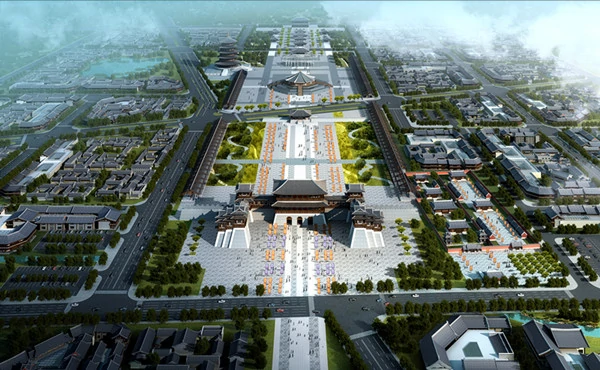
This section showcases the archaeological discoveries related to the Mingtang, models depicting changes across different dynasties, and the evolution of palace layouts during the Sui, Tang, and Song dynasties. During the Wu Zhou period, Empress Wu Zetian, renowned for her innovative governance, initiated the construction of the Mingtang, embodying the concept of “building according to suitability for the situation.” In terms of form, structure, and scale, she elevated the significance of the Mingtang, an essential ceremonial structure in ancient times, to unparalleled heights. In 688 AD, Empress Wu Zetian dismantled the Qianyuan Hall and erected the Mingtang, topping it with a circular pavilion adorned with a gilded iron phoenix towering 3 meters in height. The roof was covered with wooden tiles coated in lacquer. The Mingtang featured massive central piles of timber, serving as the main support for the bracket sets. During Wu Zetian’s reign, it served as a venue for feasts, court audiences, and the issuance of edicts.
Grand Enjoyment Hall
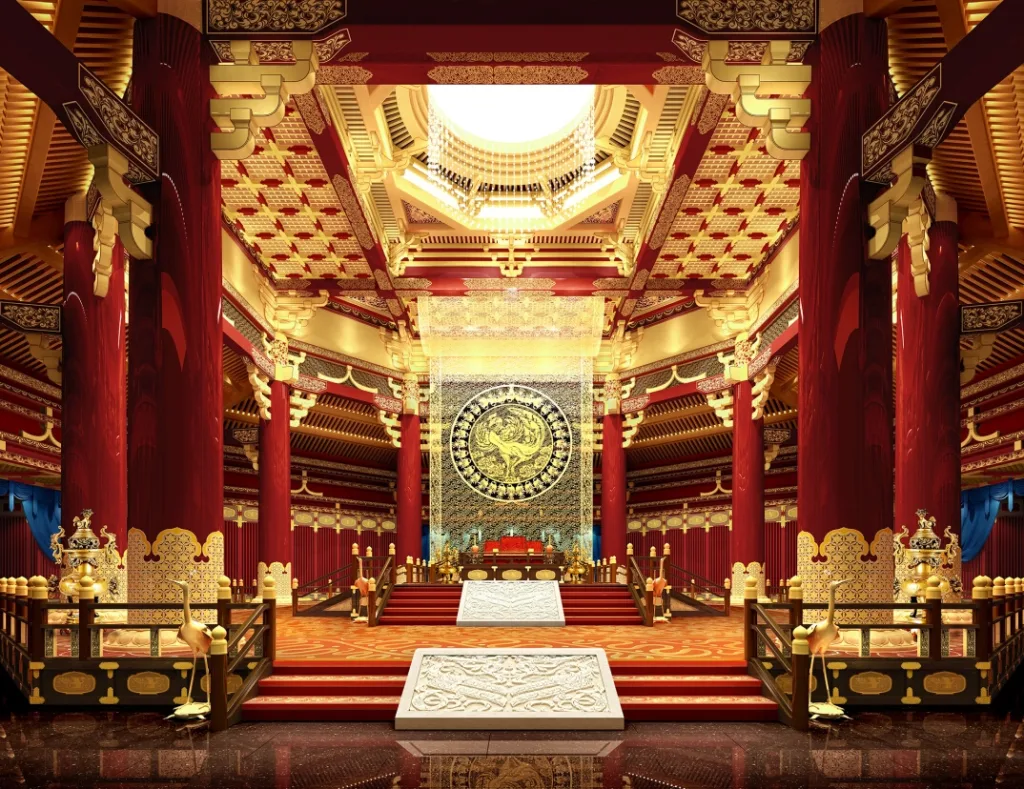
Located northwest of the Mingtang, the Grand Enjoyment Hall primarily showcases significant events during the Wu Zhou period within the Mingtang. Serving as both Wu Zetian’s administrative palace and a place of reverence for the gods, the Mingtang symbolized her imperial authority. Visitors can explore miniature scenes depicting key moments in Wu Zetian’s reign, witness ceremonial oaths, and engage in interactive experiences such as the “Ten Thousand Audiences” game. Additionally, the hall features video presentations related to Wu Zetian’s portrayal in television dramas and movies, offering a multimedia experience.
Hall of Achievements

In the year 690 AD, Wu Zetian ascended to the throne, drawing upon the political wisdom gained from her assistance to Emperor Gaozong for twenty years and lessons from the reign of Emperor Taizong of Tang. She formulated the Twelve Administrative Edicts, a comprehensive policy agenda aimed at stabilizing society and benefiting the people. The Hall of Achievements showcases exhibits related to the imperial examinations, interactive displays allowing visitors to participate in historical scenarios, and the Twelve Phoenix Pillars representing Wu Zetian’s Twelve Edicts. Additionally, visitors can explore maps illustrating the territorial expansion during Wu Zetian and Emperor Taizong’s reigns, models depicting ceremonies such as the Mount Song Enthronement Ritual, and displays of the “Pardon Gold” used by Wu Zetian to absolve individuals of their crimes.
Cultural Hall
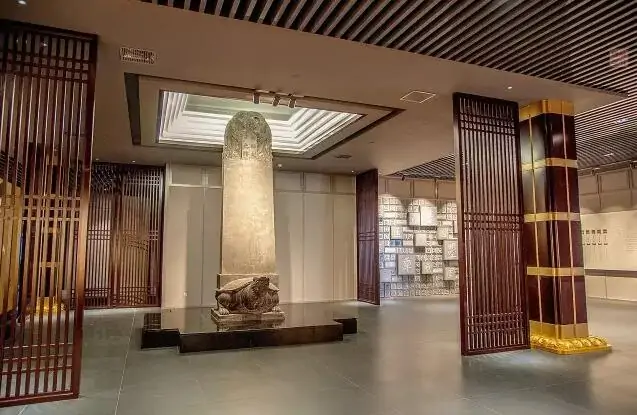
Upon entering the Cultural Hall, visitors encounter a wall adorned with twenty Chinese characters – a testament to Wu Zetian’s linguistic reforms. As the only legitimate female emperor in Chinese history, Wu Zetian boldly reformed the Chinese script, altering existing characters and creating new ones. Among these characters is “曌,” pronounced “zhao,” which Wu Zetian used to name herself. Its meaning, “sun and moon shining in the sky,” reflects Wu Zetian’s aspiration for her rule to illuminate the world, demonstrating her intellectual prowess and extraordinary wisdom.
City Construction Hall
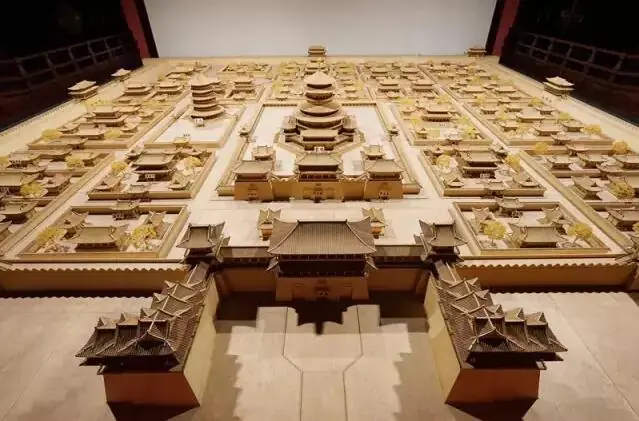
The City Construction Hall showcases the remnants of the central pillar of the Mingtang, known as the “Heaven-reaching Pillar,” surrounded by ten massive wooden beams. Visitors can marvel at a simulated starry sky, a sand table model of Wu Zetian’s palace city, and videos depicting the governance of the Wu Zhou era. A virtual representation of the “Heaven-reaching Pillar” provides insight into its grandeur, with layers of giant timber bound together by mortise and tenon joints and encircled by iron hoops. This exhibit recreates the splendor of the Tang Dynasty, allowing visitors to immerse themselves in the opulence of the era.
Film Hall
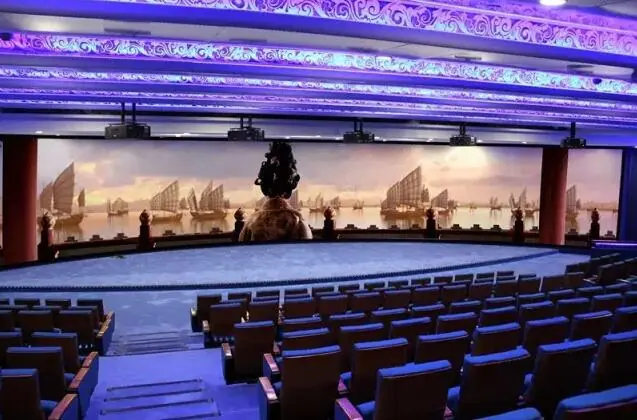
The Film Hall, located on the first floor of the Mingtang’s eastern wing, features one of the world’s largest curved screens, measuring 28 meters in length and 4 meters in height. This expansive screen offers visitors a mesmerizing and immersive viewing experience. Screening the film “Shengshi Shendu” (Prosperous Capital), the hall showcases the construction and prosperity of Luoyang during the Sui and Tang Dynasties, the establishment of Wu Zhou’s capital, and the construction of the Mingtang and Tiantang. Through this film, visitors gain insight into the glorious history of Luoyang and its significance in ancient China.
Highlights of Tiantang Tower
Guiding Hall

The second floor of the Tiantang Tower features a magnificent 22-meter-long mural titled “The Nations Pay Homage,” created by contemporary mural masters such as Professor Wang Yingsheng and Professor Sun Jingbo from the Central Academy of Fine Arts. The hall’s lighting design revolves around the theme of the phoenix, symbolizing an era of peace, auspiciousness, and harmony. Depicting the phoenixes soaring and various birds paying homage, the design embodies the auspicious and harmonious characteristics of the times.
Hall of Buddhist Meditation
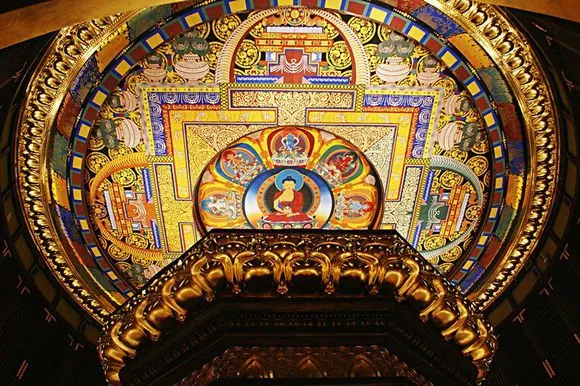
The third floor of the Tiantang Tower houses the Hall of Buddhist Meditation, crowned by a grand altar. Known as a “mandala” in Sanskrit, the altar represents a sacred place of practice in Tibetan Buddhism. In this mandala, the central lotus throne hosts the Amitabha Buddha, representing the Western Pure Land. The architecture of the mandala, with its intricate details, reflects the profound symbolism and unique artistic expression revered in Tibetan Buddhism.
Hall of Samadhi
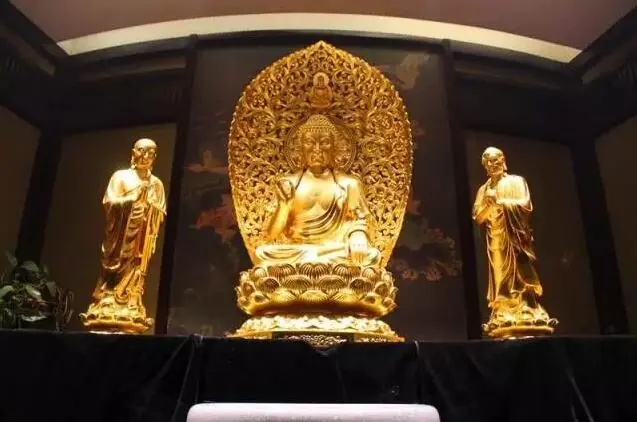
On the fourth floor of the Tiantang Tower lies the Hall of Samadhi, serving as the meditation center within the Tiantang Tower. “Samadhi” in Buddhism signifies a deep state of concentration and mental absorption, representing a state of tranquility and spiritual elevation. The hall provides a serene space for practitioners to cultivate mindfulness and inner peace through meditation. Flanking the hall are two pieces of pine resin jade scepters, symbolizing fulfillment of one’s wishes. The term “scepter” carries the connotation of fulfilling one’s desires, widely used in the design of ancient residences. These scepters, crafted with precious pine resin jade sourced locally from Henan province, highlight the regal elegance of the Tiantang Tower, enhancing its imperial grandeur with the combination of the jade’s texture and the translucent effect of the pine resin.
Treasure Hall
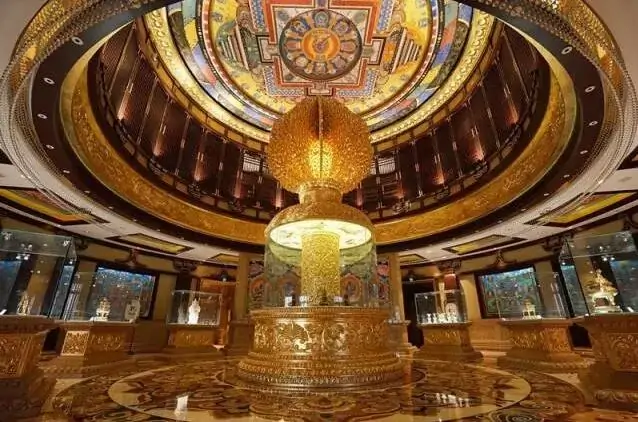
Located on the fifth floor of the Tiantang Tower, the Treasure Hall greets visitors with a wall adorned with delicate porcelain pieces forming the “Tri-colored Buddha Plate.” These porcelain works showcase the Tang Dynasty’s distinctive Sancai craftsmanship, a regional specialty of Luoyang. Created by contemporary master craftsmen such as Guo Aihe, these pieces provide a glimpse into the rich history of Luoyang through precious artifacts excavated from the region. Visitors can immerse themselves in the ambiance of the Wu Zhou era by closely examining these artifacts and feeling the spirit of the times.
Zen Tea House
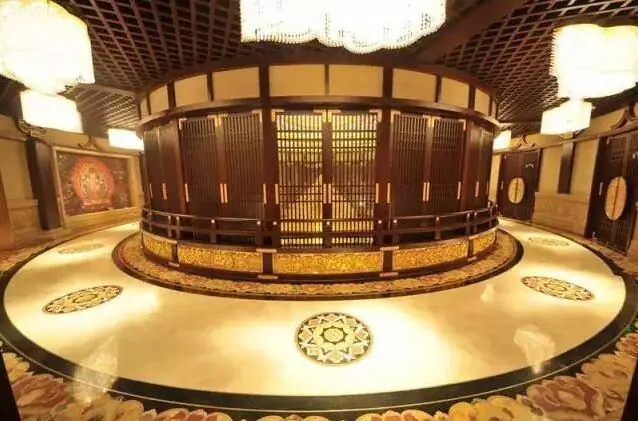
The sixth floor of the Tiantang Tower features a Zen Tea House, where visitors are greeted by an enormous “Fire-Avoidance Pearl” resembling a blazing flame reaching towards the ceiling with solemnity. In ancient times, due to the prevalence of wooden structures, the risk of fires was high. To ward off evil and ensure safety, ancient builders often placed Fire-Avoidance Pearls atop tall buildings. Integrated with the central mandala on the fifth floor, this pearl occupies nearly one-third of the mandala’s height.Tea has always been an indispensable beverage in daily life, with the Tang Dynasty witnessing the rise of tea culture. Zen Tea, a unique tea-drinking practice influenced by Buddhist philosophy, emphasizes mindfulness and spiritual contemplation. Through the Zen Tea House, visitors can experience the tranquility and harmony of the tea ceremony, embodying the essence of Buddhist teachings.
Buddha Hall

Located on the seventh floor of the Tiantang Tower, the Buddha Hall features a grand royal-style screen wall in the north, a characteristic component of traditional Chinese architecture. These screen walls were often used by feudal emperors to showcase their elevated social status and to delineate spatial boundaries within the palace complex. Above, a crystal chandelier in the shape of a “Peony Lotus” adorns the ceiling, symbolizing prosperity and auspiciousness. The peony represents wealth and honor, while the lotus symbolizes purity and fulfillment.
Thousand Buddhas Hall
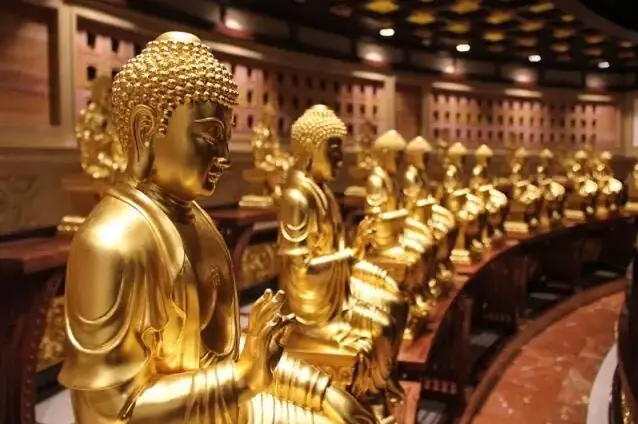
The eighth floor of the Tiantang Tower houses the Thousand Buddhas Hall, serving as the center for Buddha worship with 777 niches containing Buddha statues. The selection of 777 Buddha statues holds significant symbolism in Buddhist scriptures. In Buddhist numerology, odd numbers represent positive energy, and 7 is considered a particularly auspicious number. The arrangement of 777 Buddha statues symbolizes the past, present, and future of the Buddha’s enlightenment. The first “7” represents the seven steps the Buddha took upon birth, known as the “Seven Steps to Lotus Birth,” symbolizing profound wisdom. The second “7” signifies the Buddha’s gradual liberation from the seven emotions and six desires, achieving harmony in body and mind. The third “7” represents the “Seven Levels of Stupa,” symbolizing the fruition of future merits and the completion of virtues.
Sanctuary of the Heavens
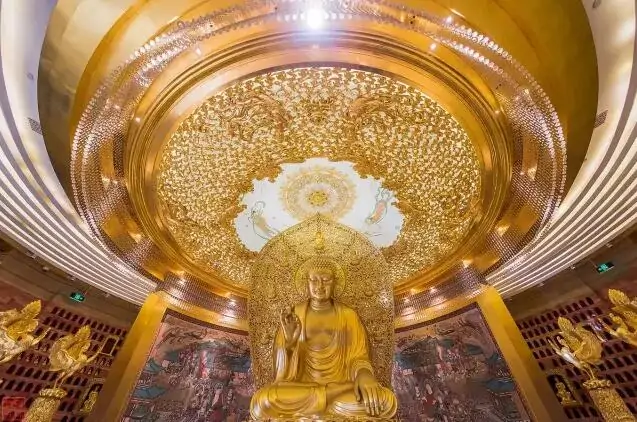
The ninth floor of the Tiantang Tower, known as the Sanctuary of the Heavens, aims to create a space for spiritual exchange between humans and Buddhas. It presents a magnificent depiction of the Western Pure Land, inviting devout Buddhists to envision the paradise awaiting them. The mural portraying the Western Pure Land elevates this spiritual sanctuary to its zenith. Moreover, from the top of the Sanctuary of the Heavens, visitors can enjoy a panoramic view of the Sui and Tang palace complex. With the Mingtang and Tiantang towers complementing each other in the distance, it feels as though time has transcended, allowing us to revisit the grandeur of the Tang Dynasty.
Various Traditional Performances

In the Mingtang and Tiantang Scenic Area, visitors can immerse themselves in various traditional performances every day, offering a glimpse into the splendor of ancient times and the experience of time travel. Here are some of the captivating performances:
The Nations Pay Homage (万国来朝): This performance portrays the grand scene of Wang Daren and millions of patriotic soldiers carving out the Silk Road to the Western Regions. Upon their triumphant return along the Silk Road, they bring back exotic treasures and envoys from countries like Persia. Emperor Wu decrees an audience on the second floor of the Tiantang Tower, echoing the court scenes of ancient times.
Grand Dance of the Divine Palace (神宫大乐舞): Every day, the Imperial Court’s ten thousand dancers perform this majestic dance in the Divine Palace, symbolizing the unwavering stability of Emperor Wu’s realm. This grand spectacle, with its magnificent and elegant demeanor, epitomizes the brilliance and splendor of classical Chinese music and dance.
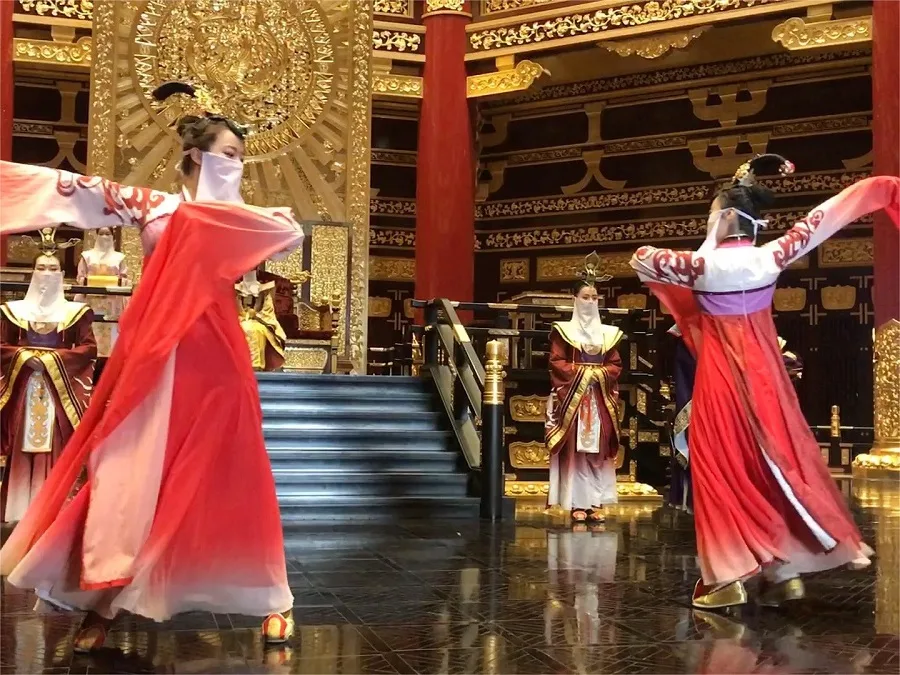
Emperor Wu’s Authority (武皇之威): Witness a dramatic encounter between Emperor Wu Zetian and Wei Yuanzhong and other ministers in the Hall of Buddhist Merit. This scene unfolds as the formidable figure of Wu Zetian confronts the avenger, Shangguan Wan’er, who seeks revenge for her grandfather’s death at the hands of the emperor. However, upon realizing her grandfather’s betrayal, Emperor Wu shows mercy, sparing Shangguan Wan’er and her mother’s lives.
Court Assembly (百官上朝): Experience the ceremonial court audiences of Emperor Wu Zetian’s reign, where courtiers pay their respects and celebrate peace and prosperity through song and dance. This performance showcases the grace and elegance of ancient Chinese culture, featuring exquisite Hanfu costumes and classical dances that reflect the profound heritage of China’s five thousand years of civilization and its rich ceremonial traditions.
Vlog about Mingtang & Tiantang Scenic Area
Attractions near Mingtang & Tiantang

Luopu Park

Luoyang Yingtian Gate
Lugares históricos de Henan, Atracciones de Luoyang